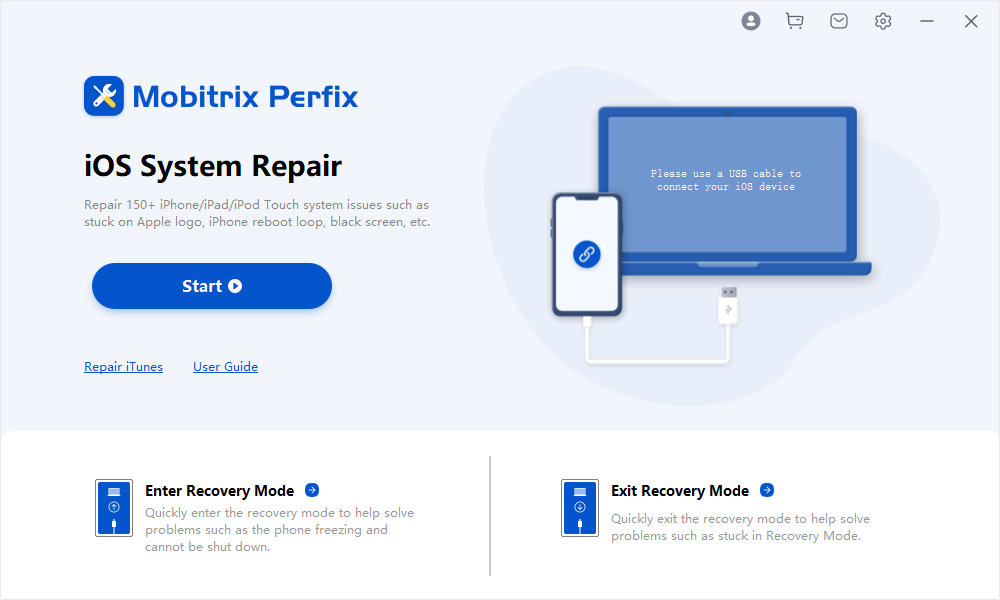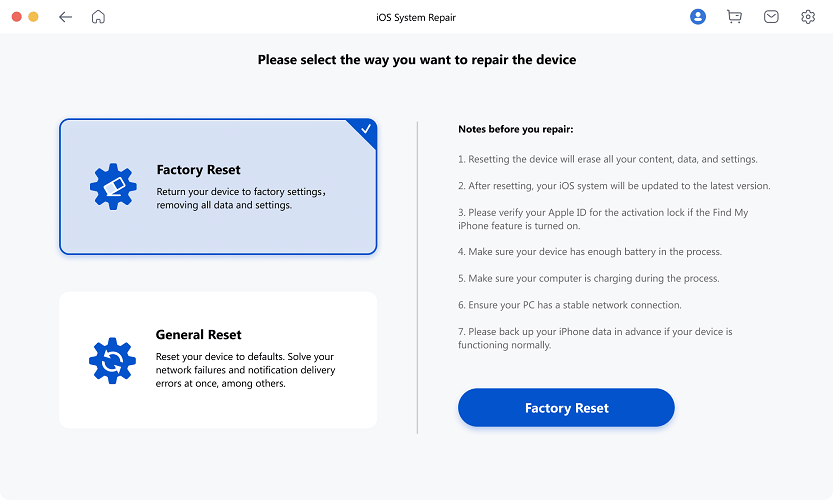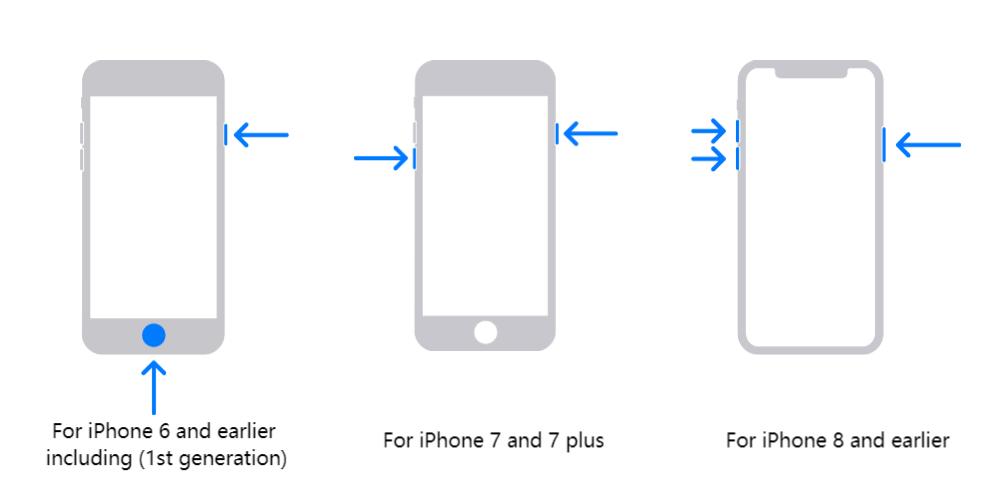- A factory reset would generally mean a risk of losing your device settings and your data.
- The DFU mode on iPhone and iPad helps restore your device and bring it back to its working order.
Okay, forgive me. I’m sure DFU mode sounds like a very technical word. But, believe me – it is a crucial mode you should know about. However, fret not. In most cases, you won’t need to use the DUF mode. It is mainly used by developers. Having worked with Apple as an electronics engineer, I never recommend using DFU right away.
But you should know to make use of a DFU mode under dire circumstances. Let me explain.
What Is DFU Mode, Under What Situations Does DFU Mode Be Required?

one dfu mode
So, DFU actually stands for Device Firmware Update. To understand DFU mode, let’s assume that your iPad or iPhone gets frozen or hanged while you are in the middle of surfing over the internet, using a social media site, or playing games. You tried to fix it by switching it on and off (the universal solution to all our device problems).
However, that didn’t work, and you decided to factory reset your iPad. A factory reset would generally mean a risk of losing your device settings and your data.
But, when even this doesn’t work, this is when DFU mode comes to the rescue.
The DFU mode on iPhone and iPad helps restore your device and bring it back to its working order.
DFU Mode is the deepest recovery mode and can be required in various situations like:
- Fixing your freeze, hung and inoperative phone
- Getting back to the old iOS version for some reason
- Jailbreaking or un-jailbreaking your device
- Removing an installed beta version of iOS
The Limitations of DFU Mode
Before proceeding with the process, it is essential to fully acknowledge the limitation of using DFU mode and what circumstances you should consider using it.
Hard to Enter
Entering into a DFU mode is a time-consuming process. It includes steps and complex sequences of various button presses without visible changes. However, here is a catch. This process is so time-sensitive that even if you mess it up by a few seconds, you will fail.
Recognizing is Difficult
Even after entering into a DFU Mode, it is challenging to recognize it as the screen remains black and blank still.
Risk of Damage
Entering into DFU mode includes the risk of damaging the device’s hardware. Also, you may be robbed of your warranty benefits if entering into a DFU mode caused any further damage to the device for which you need to claim damage.
Risk of Data Loss
Entering into the DFU Mode to reinstall the system also leads to data loss.
But then, what is the right solution? How can iPhone and iPad users fix their device issues? The good news is that the DFU Mode is not the only solution. There are alternative solutions to solve iPhone issues that are preferably safer and easier.
Using Mobitrix Perfix is one of such solutions that I’ll recommend. This does not cause damage to hardware or data loss.
DFU Mode should be preferred only when none of the options is working and the problem is too severe.
An Alternative Way Before DFU Mode
An alternative way to avoid using DFU Mode that I would highly suggest is using Mobitrix Perfix. So, what is Mobitrix Perfix?
Perfix is a one-stop solution to fix various issues of your iOS/iPadOS/tvOS/iTunes within minutes. It brings your Apple devices back to normal working conditions without any aftereffects like data loss or hardware damage.
Advantages of Perfix:
- Does not require downloading iTunes or Finder
- No loss of data in the process
- User-friendly and simple to follow the process
- It fully supports iPhone 5s to iPhone 16 and iOS 18 and earlier versions.
- 100% safe to use and respects the privacy of the user’s data
Steps
How to fix your iPhone issues using Perfix? Here is a step-by-step guide to the same:
- Click on ‘Start’ from the main menu
- Choose ‘Standard Repair’ --You won’t loss any data
- Start Repairing.

Mobitrix Perfix - Start!

Mobitrix Perfix Standard Repair - Select Standard Mode
If you still prefer using DFU Mode, I have listed the detailed points to follow in the next section.
Things You Need To Know Before Entering DFU Mode
- Avoid performing DFU on an iPhone with water damage. It would cause more trouble than good.
- Don’t forget to back up your device on iTunes or Finder before proceeding with DFU Mode. (Do NOT skip this)
- If using a USB-C cable does not work to enter DFU mode, use a normal USB cable instead. Users can use a normal USB cable and a USB-to-USB C adapter.
- Install the latest version of iTunes or MacOS on your Windows or Mac computer, respectively.
- Do not disconnect your device when iTunes for Finder is reinstalling the system firmware or software.
How To Enter And Exit DFU Mode For Different iPhone Models
Entering DFU Mode
For iPhone 6 and Earlier
- Hold and press the side button and home button at the same time until you see a black screen.
- Don't forget to hold the home button for about 10 seconds.
For iPhone 7 and IPhone 7 Plus
- First press and hold the volume down button and side button at the same time.
- Wait for the screen to turn black.
- Keep holding the volume down button for about 10 seconds.
For iPhone 8 and Later
- Press the volume up button first. Then press the volume down button. Hold the side button until the screen goes black.
- Hold the volume down and side button for 5 more seconds.
- And let go of the side button while holding the volume down button for about 10 seconds.
During this process, the device screen should be blank and black. If it shows otherwise, you need to start again.
Exiting DFU Mode
For iPhone 8 and above: First, Press and release the volume Up button and then the Volume Down button. Now, press and hold the side button until the Apple logo appears on the screen.
For iPhone 7: Press and hold the side button and volume down button together until the Apple logo appears on the screen.
For iPhone 6S and below: press and hold the side button and home button until the Apple logo appears on the screen.

new iphone will not activate force restart for different iphone models
FAQs
Q: DFU Mode VS Recovery Mode: What’s the Difference?
If your iDevice enters into recovery mode, i.e., it shows the ‘Connect to iTunes’ screen, recovery is made through iTunes. Whereas in DFU Mode, recovery can be made from any state. Under DFU Mode, the screen is blank and black, but the device is powered on.
Q: Perfix VS iTunes, Who's the Winner?
Perfix is a clear winner as it is easy to use and faster. There is also no risk of data loss. On the other hand, iTunes is a more complicated process as it shows unpredicted errors, cannot detect iPhone, is time-consuming, and leads to data loss.
Q: What's the Firmware?
Firmware is a type of software that is embedded into hardware. In this case, the hardware is the iPhone device, where its operating system is the firmware. However, firmware cannot be used as a synonym of software.
If your iPhone, iPad, or iDevice is troubling you with frequent issues, you now know how to use DFU Mode. However, I recommend downloading and using Mobitrix Perfix. It is a simple solution to all your iOS system issues. The tool doesn’t keep your Apple device at stake and neither risks your data. It also offers 1-click enter/exit recovery mode, and works with all major iOS system versions.

